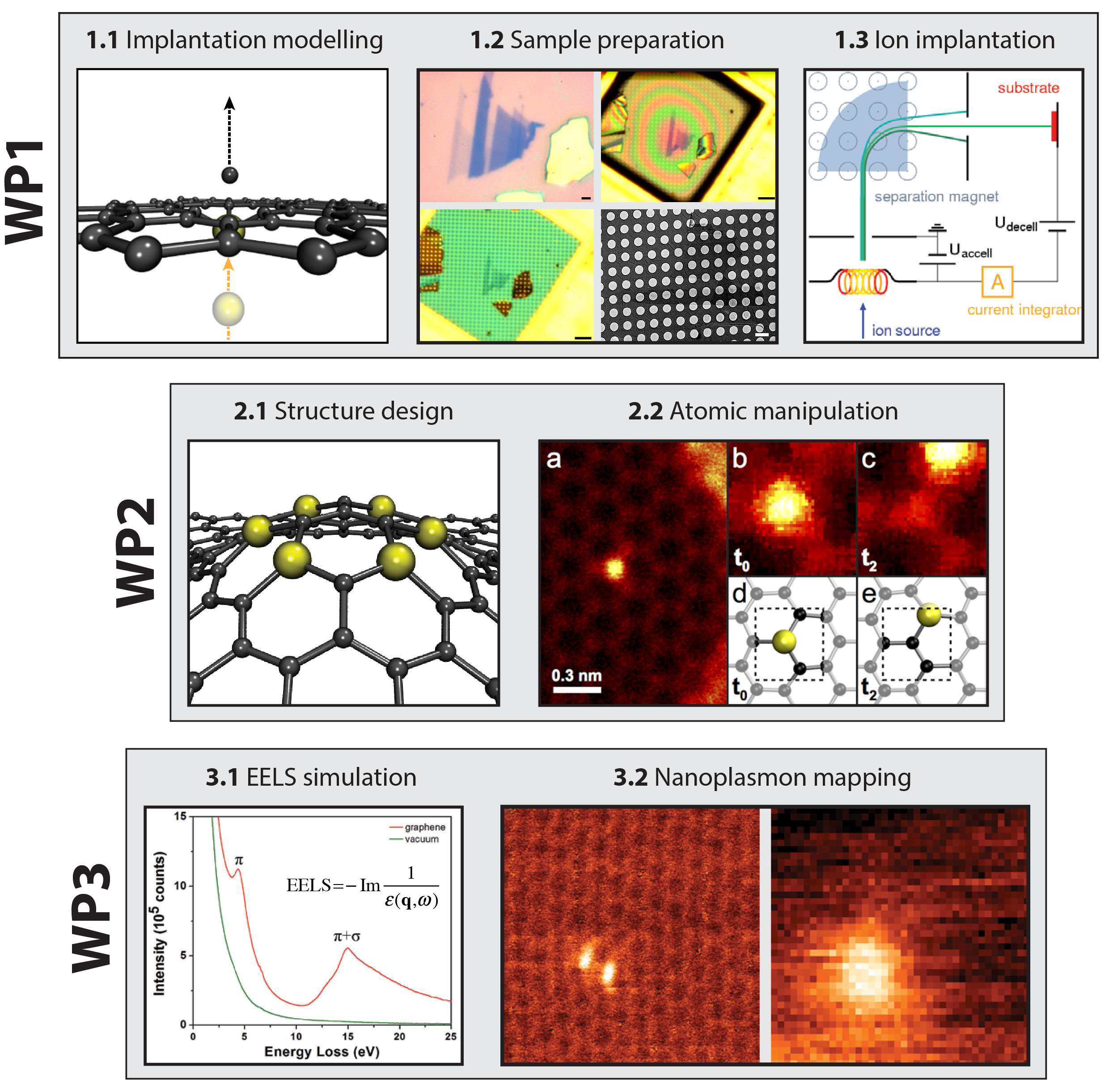| |
A pictorial illustration of the HeQuCoG project plan, divided into three work packages (WPs, see Section 1.2). The numbered tasks (1.1 to 3.2) are explained in detail in the Methods section below, and citations for images from the literature are given in brackets. Panel captions: 1.1) The implantation of silicon (yellow sphere) into the graphene lattice (black spheres) is simulated via molecular dynamics modeling, yielding optimal ion energies. 1.2) High-quality graphene samples are prepared on Quantifoil TEM grids either from graphene flakes exfoliated onto Si/SiO2 and transferred by immersing the substrate into isopropanol, or from chemically synthesized samples (Meyer et al. 2008). 1.3) Heteroatom ions are accelerated by an electric field, separated by mass, and impacted onto the graphene samples (Schwen 2005). 2.1) Density functional theory and classical potential calculations are used to simulate different configurations of several heteroatoms embedded in the graphene lattice. 2.2) Silicon atoms are moved with atomic precision in the lattice by electron irradiation in a scanning transmission electron microscope (Susi et al. 2014). 3.1) The low-energy electron energy loss spectrum (EELS) of graphene contains collective excitation modes arising from ᴨ and ᴨ+σ plasmons (Zhou et al. 2012). The inset shows the formula for calculating the loss within the GPAW code. 3.2) The influence of heteroatoms embedded in the graphene lattice (left: Z-contrast image) is measured by mapping the EELS response of the ᴨ+σ plasmon (right) (Zhou et al. 2012). With a monochromated electron source, the zero-loss peak is very narrow, allowing lower energy features to be distinguished from the background. (Panel 1.2 courtesy of Jannik Meyer / University of Vienna; panels 3.1 and 3.2 courtesy Juan-Carlos Idrobo / Oak Ridge National Laboratory.)
|
|
